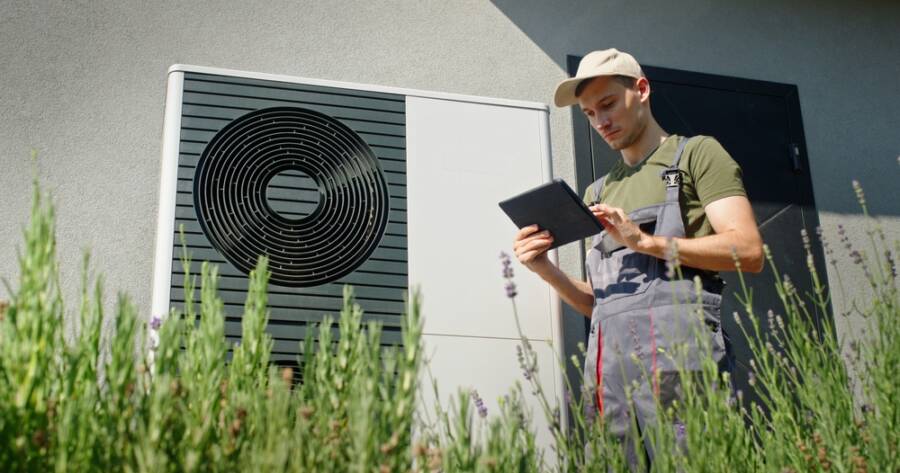Retrofitting older, uninsulated buildings in Great Britain with modern heating solutions presents unique challenges. Traditional air source and ground source heat pumps work efficiently at lower temperatures but require well-insulated homes to perform optimally. However, high-temperature heat pumps have emerged as a viable solution for older properties, offering the ability to deliver hot water at temperatures similar to gas boilers without requiring extensive insulation upgrades.
What Are High-Temperature Heat Pumps?
High-temperature heat pumps function similarly to standard heat pumps but are designed to provide water temperatures between 65°C and 80°C. This higher output makes them an ideal replacement for gas or oil boilers, as they can work with existing radiators and heating systems without the need for major modifications. This is especially beneficial for heritage buildings, period properties, and homes with planning restrictions where improving insulation is not always possible.
Benefits for Uninsulated Older Buildings
Works with Existing Heating Systems
High-temperature heat pumps can connect directly to traditional radiators and heating systems, meaning homeowners do not need to install underfloor heating or larger radiators, which are often required for standard heat pumps.
Reduced Need for Insulation
Unlike conventional heat pumps that rely on low-temperature heating over long periods, high-temperature models can generate heat at similar levels to gas boilers, reducing the urgency for expensive insulation upgrades. While some level of insulation is always beneficial, these heat pumps provide a practical solution for drafty homes.
Energy Efficiency and Lower Carbon Emissions
High-temperature heat pumps still offer significant energy savings compared to gas or oil boilers. They use electricity to extract heat from the air, ground, or water and can be three to four times more efficient than conventional boilers, reducing carbon footprints and reliance on fossil fuels.
Future-Proof Heating Solution
As the UK moves towards phasing out gas boilers and promoting renewable heating, installing a high-temperature heat pump helps homeowners prepare for upcoming regulations and reduce long-term energy costs.
Potential Drawbacks and Considerations
Higher Initial Investment
High-temperature heat pumps are more expensive than standard heat pumps, with installation costs ranging from £8,000 to £14,000, depending on the system size and property requirements. However, this can be offset by government grants and lower running costs over time.
Increased Electricity Usage
Because they operate at higher temperatures, high-temperature heat pumps may consume more electricity than conventional heat pumps, potentially leading to higher energy bills. However, pairing them with solar panels or smart energy tariffs can help reduce costs.
Financial Support and Government Incentives
The UK government offers financial incentives to encourage the adoption of renewable heating technologies:
- Boiler Upgrade Scheme (BUS): Provides grants of up to £7,500 for homeowners switching to heat pumps, including high-temperature models.
- Energy Company Obligation (ECO4): Aimed at low-income households, offering support for energy efficiency upgrades.
These incentives can significantly reduce upfront costs, making high-temperature heat pumps a financially viable option for many homeowners.
Embracing High-Temperature Heat Pumps for a Warmer, Greener Future
For owners of older, uninsulated buildings in Great Britain, high-temperature heat pumps offer a practical and energy-efficient heating solution. By providing higher water temperatures, they minimize the need for extensive insulation upgrades while allowing homeowners to retain existing radiators and heating systems. While the initial investment may be higher, government grants and long-term energy savings make them an attractive alternative to gas or oil heating.
As the UK transitions towards renewable energy solutions, high-temperature heat pumps present an effective way to modernize heating systems in historic and hard-to-insulate homes without compromising comfort or efficiency.

